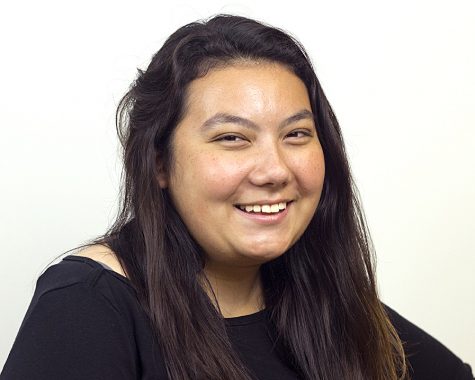CUPB elects chair, staffs subcommittee
September 13, 2015
The Council on University Planning and Budgeting elected their chairman and staffed subcommittees at their meeting Friday.
David Emmerich, the current chair of CUPB, was elected to continue serving.
Kathlene Shank, the department chair of the special education program, said she did not see anything in the bylaws that prohibited Emmerich from doing so.
Emmerich said he would be willing to serve and his term will be up in one year.
The different subcommittees such as: academic affairs, business affairs, student affairs, university affairs and the president’s area.
During the facilities update report, Tim Zimmer, the director of facilities planning and management, said he had received questions on the status of the elevator projects in the Student Services Building and McAfee Gym.
The elevators are ready, but are completely dependent on the passing of a state budget.
Zimmer said they also have successful projects in the Physical Science Building and are in the process of signing contracts for the chemistry labs.
In his administrative reports, Eastern President David Glassman said there was not a great deal to discuss, as they still did not have a budget for the 2016 fiscal year.
The legislature has passed a reduction of 6.5 percent for the university, which has not yet been signed by the governor, who initially suggested a reduction of 31.5 percent.
“We will not have a budget that we can plan off of and strategize off of until we receive our allocation or know what our allocation is from the state,” he said. “There has been no movement that we are aware of to date.”
A number of budgetary areas have been passed and signed with the exception of social services and higher education.
“The legislature and governor are spending in the state at a rate that has been estimated to be a $5 (billion) to $6 billion dollar deficit,” Glassman said.
He said the worst-case scenario was that they would work on cutting higher education more.
“Any percent greater than the 6.5 percent, any percent additional to what we have budgeted thus far, is equivalent to approximately $400,000 dollars,” Glassman said.
Glassman said he would remain optimistic and continue doing his job advocating for higher education with the state, legislature and governor.
Although Glassman said they knew enrollment would go down because of the large junior and senior classes, the multi-year trend of freshman enrollment going up is significant.
“So we’re not just looking at those things that are cost-cutting, but also things that might produce a little bit more revenue for us this year to be combined to beat that deficit that we have at hand,” Glassman said.
Blair Lord, the vice president of academic affairs, spoke about enrollment as well.
“Freshman enrollment is up by 2 percent, transfers is where our challenges are, and they remain for most of our sibling institutions as well,” he said.
Lord said this was because community college enrollment has continued to decline for several years.
“We’re up in international students, minority enrollments came out at about 26 percent this year, the most significant part of the increase was Hispanic students and Asian students,” he said.
Paul McCann, the vice president of business affairs, talked about cash flow in his report.
“I get the question all the time ‘how long can we go without a budget?” he said. “The answer is somewhere in the February-March time frame.”
They are working on what to do without a budget at this point.
“Roughly 40 percent of our budget comes from the state,” he said. “We are not going to replace that over night.”
McCann said the bottom line was that it was a lot of money and they depend a lot on the money from Illinois.
Another issue being talked about right now is the Monetary Award Program grants provided to students.
“Right now that bill has not been passed by the legislature, so what we have done is we have advanced the students that money,” he said. “We are fronting that for the state at this point.”
For the semester, that adds up to about four million dollars.
“It’s a significant amount of money advanced to the students. Will we see all of that returned by the state? We do not know at this point,” McCann said.
McCann said they were a week or two away from completing the 2015 Fiscal Year and financial records, he hoped they would have those numbers available to see what would happen in 2015.
“The big thing is an allocation between years,” he said. “That takes us a little bit of time to do.”
Dan Nadler, vice president of student affairs, gave his report on how student affairs has been working to resolve financial challenges.
“One method we’ve used is the shortening of contracts,” he said. “Someone who was on a 12 month contract might now be on an 11-month contract, or a 10-month contract.”
“We have been ranked the second safest college town in America,” Nadler said. “Also we have been ranked the second most affordable college town.”
Cassie Buchman can be reached at 581-2812 or [email protected]



















































